- Joined
- Jul 27, 2009
- Messages
- 4,075
A laboratory grading report on a diamond contains a lot of important information. But just as important as the information provided, is the information NOT contained on a diamond report. With all the grades and measurements and comments provide you might be surprised by what your report is not telling you! We will discuss vital factors including cut quality and transparency issues that may not be part of the report you are reviewing so that you will be aware of the shortcomings of even the most respected diamond reports in the market.
Key Takeaways:
It might be argued that GIA has been consistently behind in the cut grading race in the modern era. It could just as easily be argued that GIA strategically hangs back letting other labs break new ground and prove the market before they jump in. When they do move, they generally move in a straight line without backtracking, and the rest of the market usually moves with them. Their recent acquisition of AGS light performance grading technology is the best example of that strategic vision. More about that major development below.
GIA Excellent Cut Grade - Broad and Forgiving
After releasing their cut grading system for rounds GIA received significant criticism for the broad and forgiving nature of the top grade Excellent. Using light performance imaging such as ASET and IdealScope it was easy to demonstrate deficiencies in diamonds at the periphery of the GIA Ex grade. But manufacturers were pleased because they could produce diamonds with good yield cutting to the margins of the GIA EX grade. The result is that most of the diamonds on the market today achieve the EX grade and a high percentage of those have proportion sets at the margins with demonstrable light performance deficiencies. This leaves a shopper looking for the best in cut quality without a convenient way to tell an outstanding stone from a marginal one. Thus, a very important thing that the diamond report is not telling you!

The American Gem Society (AGS) established their own diamond grading laboratory in 1995 with a focus on cut quality analysis. Their success in attracting a new generation of diamond enthusiasts to their AGS Ideal report was a clear indication of an underserved segment of the market. But it would be another 10 years before GIA started putting an overall cut grade on their reports, and only for round brilliants. At about that same time AGS Laboratories (AGSL) released their revolutionary light performance-based cut grading system featuring their scientifically sophisticated ray tracing technology. Prior to that point in 2005 cut grading had been done using predetermined tables of basic parameters, including the newly released GIA system for rounds. The peer reviewed AGSL system found wide acceptance in the diamond market, with the AGS Platinum certificate becoming the ultimate pedigree in terms of cut quality. And the beauty of the system was that it could be used to grade fancy shape diamonds which had been hopelessly frustrating to design a parametric system around.
Fast forward to 2022 when GIA acquired the AGSL technologies, closing the lab and turning it into a research center for GIA, focusing on the further development of cut quality analysis. GIA wasted no time launching the AGS Ideal addendum report for rounds in the sweetspot of the GIA EX range, thereby giving consumers a way to target the truly excellent diamonds within the broad Ex range. Problem solved! Except that the market is largely unaware of the development because the AGS Ideal grade does not appear on the main GIA report itself; instead it is a separate “addendum” report. Another example of the report not telling you everything!
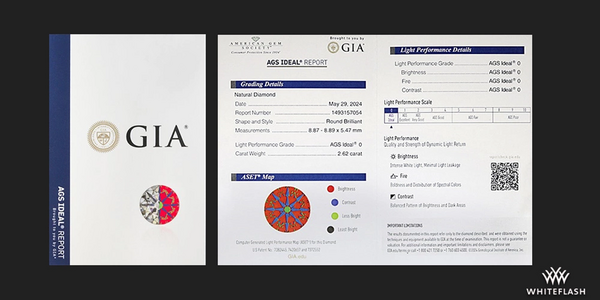
However, as a half-step GIA has recently begun adding a small reference on the bottom of reports (lower left) that have AGS Ideal addendums, so these “dual cert” diamonds can now be spotted by shoppers who are observant. And using the QR code (lower right) will pull up a page where both reports are clearly visible and accessible.
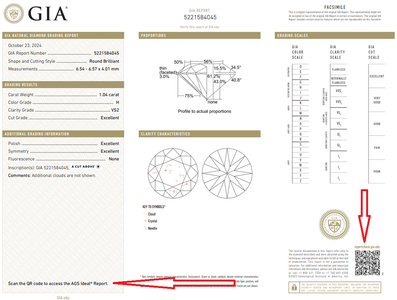
Cross reference on GIA reports for diamonds that also have AGS Ideal reports, plus QR code to digital copies
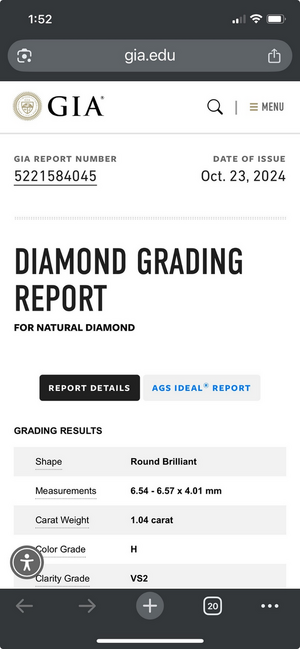
QR code takes you to digital copies of both reports
Important note: Due to the way GIA offers their service, not every report that has a corresponding AGS Ideal report will have the printed reference statement. But if the Ideal report exists, it should be accessible through the QR code.
Overall Cut Grade for Fancy Shapes – Missing in Action
One of the most glaring deficiencies in diamond reports is the lack of an overall cut grade for fancy shape diamonds. This is changing with some labs such as IGI and GCAL rolling out new fancy cut grading systems, but GIA is again behind the curve. With only polish and symmetry grades indicating aspects of “finish” but with no grade for overall cut quality, a consumer is left to struggle with the basic proportions in trying to find a well cut fancy shape. And that is a daunting task for even a professional! The fact is that grading systems have been slow to develop because it is literally impossible to develop an accurate system for grading fancies based upon basic parameters. The numerous additional variables make it orders of magnitude more complicated than for rounds.
So while, here again, the GIA report is failing to provide all the information needed by consumers, there is help on the way. The AGS light performance system now owned by GIA promises to be the answer. But until it is fully deployed on GIA reports, the consumer is still in the dark in regards to light performance of fancy shapes. While it might be argued that the consumer has the choice to seek out an IGI or a GCAL report, shoppers for natural diamonds of significance overwhelming feel the need for a GIA report, considering GIA color and clarity grading to be the most accurate, consistent, and universally accepted in the market.
Optical Symmetry
The symmetry grade on a diamond report is what is known as “meet point” symmetry. It is a measure of how well contiguous facets come together at the right points around the stone. Optical symmetry or optical precision is a measure of how precisely aligned the corresponding facets are in 3D space. Because a faceted diamond is essentially a 3D sculpture made of tiny mirrors, optical symmetry is a measure of how well facet design has been executed, and this has implications for not only craftsmanship but also for optimizing light performance.
Here again, a GIA report does not tell us anything about optical symmetry. This is where advanced imaging such as the hearts and arrows viewer comes in to fill the information gap. A very crisp and consistent pattern of hearts and arrows is visual evidence of a high level of optical symmetry. ASET imaging as well as IdealScope are other tools that reveal aspects of optical symmetry. Of course, these analytical tools are not part of a GIA report and need to be accessed separately for a consumer to fully understand a diamond. They are, however, starting to show up on other laboratory reports such as IGI reports. There is also an ASET light map on GIA’s own AGS Ideal addendum report, but again it is a separate document that does not appear on the main GIA report, and is not as yet available for all diamonds.
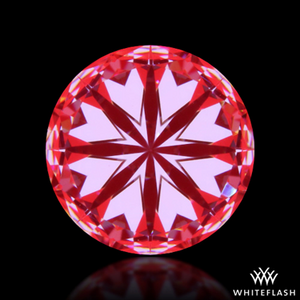
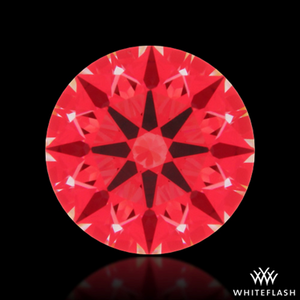
Actual hearts and arrows photos above showing top optical symmetry
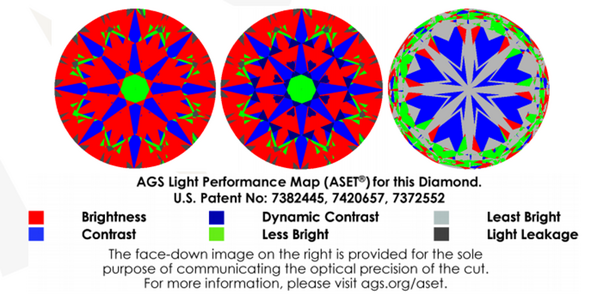
Hearts and arrows (above) as seen in computer generated ASET light maps
Transparency Grading – The Laboratories’ Big Miss
We tend to thing of diamonds as being completely transparent gems, but that is not always the case. Certain inclusions in certain amounts and densities can appreciably reduce transparency and make for a cloudy diamond with diminished fire and brilliance, even in precision cut diamonds. In some cases, atomic level defects such as crystal strain and striation of the carbon lattice can also impair transparency. (This has become very apparent in the lab grown diamond market). But light scattering inclusions in natural diamonds can be just as problematic.
Transparency issues are a sleeping problem in diamonds because it can be subtle enough not to be noticed by those without a trained eye - one that can make a diamond sleepy! Because no gemological laboratory yet measures or grades transparency, consumers may have no idea that the ideal cut diamond they shopped so diligently for will never have optimal light performance because of transparency issues that did not appear on the report and were never brought to their attention.
Knowing how to read between the lines of a GIA report can help identify diamonds with a potential transparency problem. But this indirect way of reporting is inadequate for protecting the consumers from an important potential problem that takes a trained eye to assess.
Why all this matters for choosing a diamond
There is a lot of detailed information contained in laboratory reports. But just as important is pertinent information that may be missing. This is why it is important to understand some of the issues that need to be evaluated over and above what the lab report is telling us.
The GIA Excellent cut grade is too broad and forgiving to be sufficient for shoppers looking for the finest in cut quality. Though AGS Ideal addendum reports are available on qualifying diamonds, it is a separate report and is not strongly referenced on the main GIA report. Thus, it is a something of a well kept secret.
Fancy shape diamonds do not have overall cut quality grades on GIA reports today. Therefore, other means are usually necessary for a consumer to make this judgment. This may change eventually if GIA deploys their recently acquired AGS light performance technology across the shape spectrum, and if those grades are not relegated to a separate addendum report as they are today.
Optical symmetry is not graded on a GIA report, even though it has a significant bearing on craftsmanship and the optimization of the facet design in terms of light performance. Other labs such as IGI and GCAL have launched systems in recent years that include these aspects but shoppers looking for diamonds with GIA reports will have to seek out advanced imaging such as Hearts and Arrows, ASET and IdealScope in order to understand the level of optical precision of their diamond.
And possibly one of the least known and most important aspects of diamond quality that is not conveyed on any major laboratory report today is transparency. Certain inclusion types as well as atomic level defects can impair transparency in diamonds and thus diminish the internal propagation of light rays resulting in diminished light performance, even in perfectly cut diamonds.
___
What are your thoughts about laboratory reports and their weaknesses or ommissions?
Key Takeaways:
- While essential, a laboratory report does not tell the whole story of a diamond
- Cut quality grades can be too broad or missing altogether from a diamond report
- GIA Triple Ex does not ensure outstanding light performance
- GIA acquisition of AGS Light performance technology is a promising development
- Light Performance for fancy shape diamonds cannot be determined by parameters alone
- Optical Symmetry – facet alignment in 3D space – matters for cut quality optimization
- Transparency grading – the big miss in laboratory grading of diamonds
- Why all this matters in shopping for a diamond
It might be argued that GIA has been consistently behind in the cut grading race in the modern era. It could just as easily be argued that GIA strategically hangs back letting other labs break new ground and prove the market before they jump in. When they do move, they generally move in a straight line without backtracking, and the rest of the market usually moves with them. Their recent acquisition of AGS light performance grading technology is the best example of that strategic vision. More about that major development below.
GIA Excellent Cut Grade - Broad and Forgiving
After releasing their cut grading system for rounds GIA received significant criticism for the broad and forgiving nature of the top grade Excellent. Using light performance imaging such as ASET and IdealScope it was easy to demonstrate deficiencies in diamonds at the periphery of the GIA Ex grade. But manufacturers were pleased because they could produce diamonds with good yield cutting to the margins of the GIA EX grade. The result is that most of the diamonds on the market today achieve the EX grade and a high percentage of those have proportion sets at the margins with demonstrable light performance deficiencies. This leaves a shopper looking for the best in cut quality without a convenient way to tell an outstanding stone from a marginal one. Thus, a very important thing that the diamond report is not telling you!

GIA Excellent cut with significant light leakage and precision faults (above)
The GIA Cut Grading FixThe American Gem Society (AGS) established their own diamond grading laboratory in 1995 with a focus on cut quality analysis. Their success in attracting a new generation of diamond enthusiasts to their AGS Ideal report was a clear indication of an underserved segment of the market. But it would be another 10 years before GIA started putting an overall cut grade on their reports, and only for round brilliants. At about that same time AGS Laboratories (AGSL) released their revolutionary light performance-based cut grading system featuring their scientifically sophisticated ray tracing technology. Prior to that point in 2005 cut grading had been done using predetermined tables of basic parameters, including the newly released GIA system for rounds. The peer reviewed AGSL system found wide acceptance in the diamond market, with the AGS Platinum certificate becoming the ultimate pedigree in terms of cut quality. And the beauty of the system was that it could be used to grade fancy shape diamonds which had been hopelessly frustrating to design a parametric system around.
Fast forward to 2022 when GIA acquired the AGSL technologies, closing the lab and turning it into a research center for GIA, focusing on the further development of cut quality analysis. GIA wasted no time launching the AGS Ideal addendum report for rounds in the sweetspot of the GIA EX range, thereby giving consumers a way to target the truly excellent diamonds within the broad Ex range. Problem solved! Except that the market is largely unaware of the development because the AGS Ideal grade does not appear on the main GIA report itself; instead it is a separate “addendum” report. Another example of the report not telling you everything!

The GIA's AGS Ideal addendum report
However, as a half-step GIA has recently begun adding a small reference on the bottom of reports (lower left) that have AGS Ideal addendums, so these “dual cert” diamonds can now be spotted by shoppers who are observant. And using the QR code (lower right) will pull up a page where both reports are clearly visible and accessible.

Cross reference on GIA reports for diamonds that also have AGS Ideal reports, plus QR code to digital copies

QR code takes you to digital copies of both reports
Important note: Due to the way GIA offers their service, not every report that has a corresponding AGS Ideal report will have the printed reference statement. But if the Ideal report exists, it should be accessible through the QR code.
Overall Cut Grade for Fancy Shapes – Missing in Action
One of the most glaring deficiencies in diamond reports is the lack of an overall cut grade for fancy shape diamonds. This is changing with some labs such as IGI and GCAL rolling out new fancy cut grading systems, but GIA is again behind the curve. With only polish and symmetry grades indicating aspects of “finish” but with no grade for overall cut quality, a consumer is left to struggle with the basic proportions in trying to find a well cut fancy shape. And that is a daunting task for even a professional! The fact is that grading systems have been slow to develop because it is literally impossible to develop an accurate system for grading fancies based upon basic parameters. The numerous additional variables make it orders of magnitude more complicated than for rounds.
So while, here again, the GIA report is failing to provide all the information needed by consumers, there is help on the way. The AGS light performance system now owned by GIA promises to be the answer. But until it is fully deployed on GIA reports, the consumer is still in the dark in regards to light performance of fancy shapes. While it might be argued that the consumer has the choice to seek out an IGI or a GCAL report, shoppers for natural diamonds of significance overwhelming feel the need for a GIA report, considering GIA color and clarity grading to be the most accurate, consistent, and universally accepted in the market.
Optical Symmetry
The symmetry grade on a diamond report is what is known as “meet point” symmetry. It is a measure of how well contiguous facets come together at the right points around the stone. Optical symmetry or optical precision is a measure of how precisely aligned the corresponding facets are in 3D space. Because a faceted diamond is essentially a 3D sculpture made of tiny mirrors, optical symmetry is a measure of how well facet design has been executed, and this has implications for not only craftsmanship but also for optimizing light performance.
Here again, a GIA report does not tell us anything about optical symmetry. This is where advanced imaging such as the hearts and arrows viewer comes in to fill the information gap. A very crisp and consistent pattern of hearts and arrows is visual evidence of a high level of optical symmetry. ASET imaging as well as IdealScope are other tools that reveal aspects of optical symmetry. Of course, these analytical tools are not part of a GIA report and need to be accessed separately for a consumer to fully understand a diamond. They are, however, starting to show up on other laboratory reports such as IGI reports. There is also an ASET light map on GIA’s own AGS Ideal addendum report, but again it is a separate document that does not appear on the main GIA report, and is not as yet available for all diamonds.


Actual hearts and arrows photos above showing top optical symmetry

Hearts and arrows (above) as seen in computer generated ASET light maps
Transparency Grading – The Laboratories’ Big Miss
We tend to thing of diamonds as being completely transparent gems, but that is not always the case. Certain inclusions in certain amounts and densities can appreciably reduce transparency and make for a cloudy diamond with diminished fire and brilliance, even in precision cut diamonds. In some cases, atomic level defects such as crystal strain and striation of the carbon lattice can also impair transparency. (This has become very apparent in the lab grown diamond market). But light scattering inclusions in natural diamonds can be just as problematic.
Transparency issues are a sleeping problem in diamonds because it can be subtle enough not to be noticed by those without a trained eye - one that can make a diamond sleepy! Because no gemological laboratory yet measures or grades transparency, consumers may have no idea that the ideal cut diamond they shopped so diligently for will never have optimal light performance because of transparency issues that did not appear on the report and were never brought to their attention.
Knowing how to read between the lines of a GIA report can help identify diamonds with a potential transparency problem. But this indirect way of reporting is inadequate for protecting the consumers from an important potential problem that takes a trained eye to assess.
Why all this matters for choosing a diamond
There is a lot of detailed information contained in laboratory reports. But just as important is pertinent information that may be missing. This is why it is important to understand some of the issues that need to be evaluated over and above what the lab report is telling us.
The GIA Excellent cut grade is too broad and forgiving to be sufficient for shoppers looking for the finest in cut quality. Though AGS Ideal addendum reports are available on qualifying diamonds, it is a separate report and is not strongly referenced on the main GIA report. Thus, it is a something of a well kept secret.
Fancy shape diamonds do not have overall cut quality grades on GIA reports today. Therefore, other means are usually necessary for a consumer to make this judgment. This may change eventually if GIA deploys their recently acquired AGS light performance technology across the shape spectrum, and if those grades are not relegated to a separate addendum report as they are today.
Optical symmetry is not graded on a GIA report, even though it has a significant bearing on craftsmanship and the optimization of the facet design in terms of light performance. Other labs such as IGI and GCAL have launched systems in recent years that include these aspects but shoppers looking for diamonds with GIA reports will have to seek out advanced imaging such as Hearts and Arrows, ASET and IdealScope in order to understand the level of optical precision of their diamond.
And possibly one of the least known and most important aspects of diamond quality that is not conveyed on any major laboratory report today is transparency. Certain inclusion types as well as atomic level defects can impair transparency in diamonds and thus diminish the internal propagation of light rays resulting in diminished light performance, even in perfectly cut diamonds.
___
What are your thoughts about laboratory reports and their weaknesses or ommissions?
Last edited:


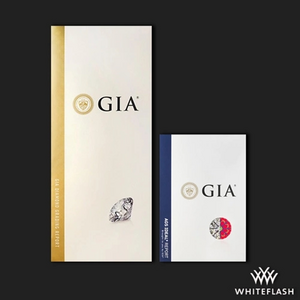
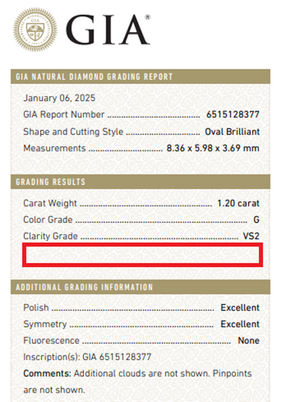

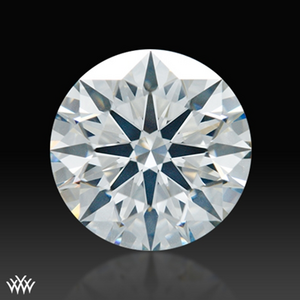
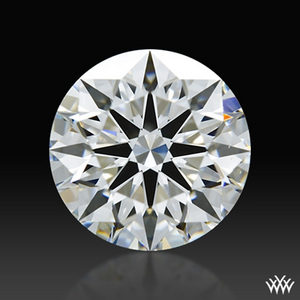






300x240.png)